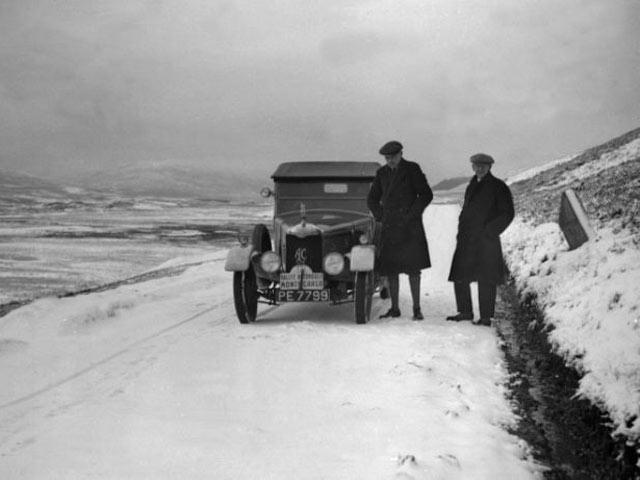Cote d'Azur and its surroundings can rightfully claim the title as the "birthplace of motorsport". That is where Emil Jellinek, a wealthy Austrian diplomat who became a successful businessman, organized the first speed-weeks in the history of the motorcar to the local high society. No wonder that the Monte Carlo Rally, likely the oldest event on the motorsport calendar, is celebrating its 100th anniversary this year.
The celebration will be taking place on the Cote d'Azur and the big mountains towering above the glistering Mediterranean. It all started back when Alexandre Noghes, a cigarette factory owner who was also the president of the local bicycle and car club and a close friend of Prince Albert I, came up with the idea for a car competition that would finish in Monaco but would start in 11 cities throughout Europe, among them Paris, Vienna and Brussels. It was designed as a reliability trial and "Concours d'Elegance" competition with a complicated set of rules.
On January 21, 1911, 20 vehicles set off with each one having a "Monaco Rally" logo sign on the side. That was regarded as the birth of the competitors' number signs. Amazingly, just two of the starters didn't arrive in Monte Carlo, which was remarkable considering the fact that the automobile had only been invented 25 years before. The Frenchman Henri Rougier, in a Turcat-Mery, was declared the winner with his average speed a bit above 13 mph. 65 participants started the challenge the following year and Julius Beutler, a German in a French-built Berliet won the rally. He was the last German to win until 1960.
But two years simply wasn't enough to establish a tradition and so a long break ensued until the third race, which took place in 1924. All told, a run of 16 consecutive rallies took place through January 1939, just eight months prior to the outbreak of World War II. And when the rally resumed in 1949, the comfort and elegance of the cars were no longer assessed. What still remained were the trials in the Maritime Alps and the secret time checks that were introduced in 1930. Basically, this was all about the principle of a steady drive that was applied for the long journey to Monaco.
How it worked was that anybody who missed the correct point in time at one of the secret posts conceded 0.05 points per second of deviation. There was also an acceleration and braking trial in the heart of Monaco that was introduced in 1931. The rally became more exciting in 1936 when the Automobile Club de Monaco (ACM) raised the average speeds demanded for the trip to Monaco, thus the rally mutated into a road race in practice. This resulted in participants entering lighter, more specialized vehicles. Time and again, this resulted in accidents along the way. ACM soon reacted: Only series vehicles were authorized from 1938 onwards.
Moreover, the steadiness trial only began on a new loop through the Maritime Alps. This loop, driven in various course variants over the years, became the actual home of the "Monte". And the roads that were often covered with ice and snow contributed to the myth of the rally. After the 1939 event, however, the curtain fell for the time being.

